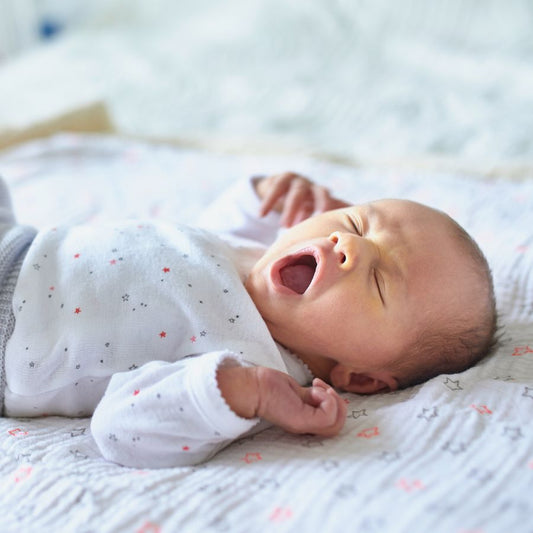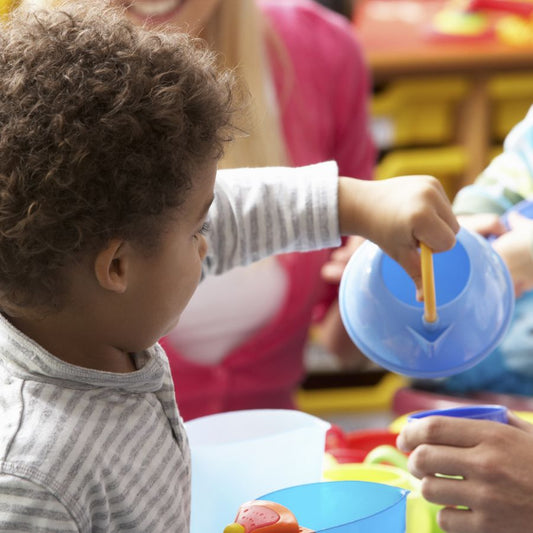Potty training is both feared yet longed for; the joy of not having to worry about changing nappies anymore, coupled with the fear of the challenge it brings. Read our potty training tips on how to prepare and tackle it best!
When to start potty training?
Most parents potty train their children between the ages of two and a half and three and a half years old. This may seem like quite a large window, but it varies with each child.
The most important rule for potty training is to wait until your little one shows signs they are ready. Forcing them before they’re ready will only make things worse.
How can you tell if your child is ready for this major transition?
Once your child starts to have dry nappies, it’s a good sign that they have started to control their bladder. Other signs are: they tell you as soon as they’ve had a wee or a poo or they announce they’re about to have one or they begin to show an interest in the potty.
Your child may even start telling you they don’t want a nappy on anymore, this is also a good sign. There’s no better time to begin potty training than when your child has instigated it themselves!
Tips for potty training success
If you feel your child is showing signs they’re ready, then it's time. Before we tell you how to potty train your child, here’s a few initial tips to help. Your little one will get the hang of it in no time!
Be calm and patient
If you and everyone else in the family give it too much attention, as if it was super-important, then things won’t go to plan: your child will pick up on the expectations and feel under pressure “to perform”, consequently, refuse to even try.
So, stay calm and be patient. Adopt a soft approach and don’t give too much importance to it.
Keep positive and show how confident you are in them, so that your child also feels they can cope. Don’t be negative, because if a parent is doubtful, then this in turn will also cause their child to doubt their own capability.
Don't make a fuss if they have an accident
Making a fuss if they have an accident, blackmailing them or offering rewards if they use the potty are not the right ways to go about potty training them.
Be patient, they may not be able to hold it in every time. Don't make a fuss; on the contrary, make light of it. For young children, controlling their bladder is not a natural process and they need to learn how it’s done.
Temporary setbacks are totally normal and there will be several little accidents before a child learns to use the toilet independently.
Show them what to do
Mum and Dad's example is always a winner because young children learn by imitation.
Let them follow you to the bathroom and watch you, so they understand, in a natural way, what going the toilet means.
You can also spend time to explain each step to them, such as wiping with toilet paper, pulling underwear up and down, flushing the toilet and washing your hands.
How to potty train in 7 days
Once your child is showing signs of being ready, you can try the following potty training method, which is divided into days to facilitate each step involved:
Day 1
Read a potty training book together, such story books help engage a toddler’s interest in weeing and pooing just like grown-ups. There are some really good ones available to buy.
Day 2
Take them into the bathroom with you and explain to them what you’re doing to capture their interest. Children learn by imitation, especially from their parents.
Don't be embarrassed, explain each and every step clearly, right up to washing and drying your hands.
Day 3
Let your child choose a potty they like, it’s important that they are comfortable and find a "place" where they feel at ease. You can find some great ones today.
Day 4
Sit them comfortably on the potty, removing their underwear or nappy. Explain calmly that they are to use their potty whenever they need a wee or a poo.
Even if they aren’t able to wee straight away, they will gradually get used to it. If they are hesitant or refuse to sit on the potty, leave it for a few days and then try again.
You can proceed to the next stage as soon as they are willing to sit on it and feel comfortable.
Day 5
Establish a potty routine which fits in with your child’s own daily routine: for example, sitting them on their potty as soon as he/she wakes up, mid- morning, before and after lunch and so on, up until bedtime.
Encourage them to sit calmly on their potty for a few minutes, even if they don’t wee or poo. When they succeed, show how delighted you are and make a big deal of it. If nothing happens, praise them equally for trying.
Day 6
Explain to your child that from now on, they don’t need their nappy anymore as they can use their potty. Ask them to tell you when they need a wee or a poo. Continue with the routine you started the day before.
Day 7
Stick with your potty routine and offer lots of praise when they succeed. They will learn quicker than you think, but it’s perfectly normal for there to be setbacks.
Night time potty training
Some parents prefer a firmer and more definitive switch from nappy on to nappy off. Others, on the other hand, prefer to continue to put their baby in nappies at night, as it’s the most delicate time.
In fact, it may take months or even years before a baby is able to have full control of their bladder at night. Episodes of bed-wetting may continue up to primary school.
Before leaving their nappy off at night, you can try an intermediate route: leave their nappy on but encourage your child to use their potty. Tell them that they can call mum or dad and you will help.
In any case, there are bound to be a few accidents so be prepared to wash several sets of pyjamas and sheets. A waterproof sheet to protect your child's mattress is a good idea; it will also reduce the amount of time it takes you to change wet sheets during the night, so as not to disturb your child’s sleep too much and allowing them to sleep in a dry bed.
Potty training boys
Why should boys learn to wee and poo in the potty differently from girls?
The only difference is that they are also able to do it standing up. To learn how to wee whilst standing, your child can watch how daddy does it. Although, at least in the beginning, it may be more practical for him just to use the potty.
Once you’ve decided to start potty training, don’t go back. No matter what the situation, for example: a holiday or an outing, it will only confuse your child and prolong the whole process.








